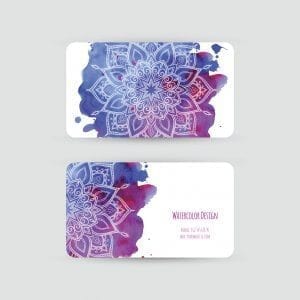Everybody has a rolodex of business cards they never use. Each card is as unmemorable as the next. Most are eventually thrown away. The challenge for companies is to design business cards that drive interaction. If your company is thinking of updating their cards, consider these useful tips to get more attention.
Think Outside the Box
People naturally notice and remember those things that are out of the ordinary. Instead of the standard 3.5-by-2 inch cards, choose a different size or shape, such as:
- A perfect square
- A slightly larger rectangle
- A half-height mini card
A business card that serves another functional purpose also has a better chance of not being tossed in the trash. For example, a construction company could print employees’ contact information on paper that resembles a ruler. Suddenly, your new contact has another reason to hold on to your information.

Splurge on Quality Paper
Business cards that are printed on higher quality paper stand out, because they look and feel different. These more substantial cards give your business an instant boost of creditability and tend to leave a good first impression.
Or, you can even add special finishes, such as glossy, foil blocking, spot-UV and metallic links. Although these may be costly, they can make your business cards pop.
Typeface and Font Size
Typefaces and font sizes are another way for companies to help their employees’ cards look sharp and sophisticated. It’s important to strike a visual balance with the text, which makes it easy to read yet doesn’t consume the whole card.
Business card designers usually suggest these tips:
- Address and phone contact information should be 7 to 8 point font.
- Employee names should be 1 point bigger or set in a bold typeface.
- The title could be the same point size as the address details or 1 point smaller.
- The company name should be a minimum of a 12 point font.
A small font size will also free up room on the card to place your business’ logo in a size that is easily recognizable to everyone.

Design Business Cards with a Photo
Can you count how many business cards you have for people whose faces you can’t remember? If you design business cards with headshot photos, it will help contacts easily put a face with that name.
With or without photos, it’s possible to include a larger image that is consistent across all of your company’s business cards. This branding strategy can help cardholders quickly identify your company. For example, a business located in Brooklyn could use a picture of the Williamsburg Bridge.
Easy to Read and Remember
Even though a lot of time is spent considering what goes on your business card, it’s important to remember those who receive it might not look at it for more than a second.
For your card to be memorable, you’ll need attractive colors and the right balance of pertinent information, like company name, email and website.
In addition to social media accounts, a QR code on your business card is an effective way to track those who take another action after receiving your contact information. This data will give you a better indication of which leads to follow up with in the future.
Sometimes, just getting your business card into the right hands is an uphill battle. But once you get there, the last thing you want is to be forgotten. With these design tips, any company can have the type of cards that create a lasting impression.

